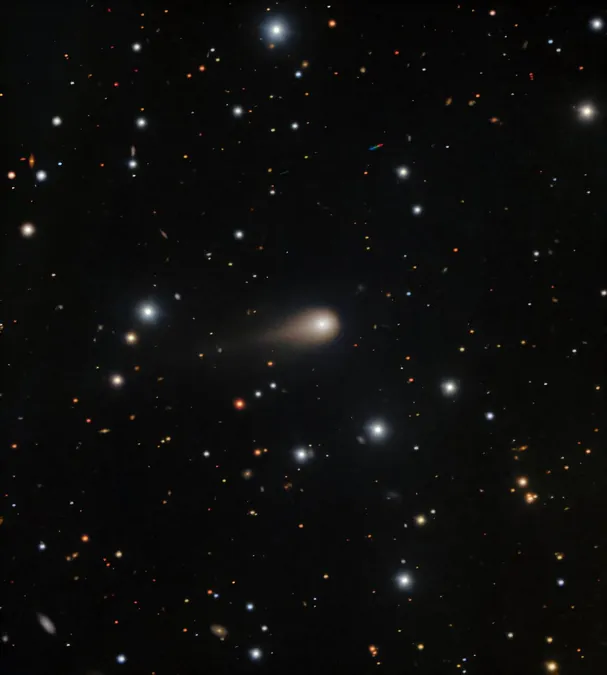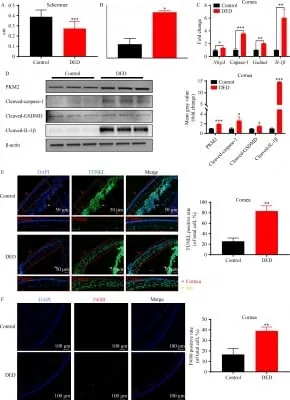
Are BlueDOGs the Evolution of Little Red Dots?
2025-09-04
Author: Ming
A Cosmic Connection Unveiled
In the vast expanse of the universe, one of astronomy's greatest challenges is grasping the concept of time. As we peer deeper into space, we also peer back into the past. This journey reveals how celestial objects can undergo dramatic transformations over billions of years. A groundbreaking preprint from researchers at the University of Science and Technology in South Korea proposes an intriguing connection between two recently identified phenomena: the enigmatic 'Little Red Dots' (LRDs) of the early universe and the 'Blue Dust-Obscured Galaxies' (BlueDOGs) that emerged a little later.
What Are Little Red Dots?
Discovered by the James Webb Space Telescope, LRDs emerged around 600 million to 1.6 billion years post-Big Bang. These diminutive entities exhibit a distinct red hue, a phenomenon attributed to their high redshift and the thick clouds of gas and dust enveloping them. Although their exact nature remains uncertain, current theories suggest they are rapidly developing galaxies, each housing a supermassive black hole at their core.
Enter the BlueDOGs: Closer and Brighter!
On the other end of the cosmic timeline, BlueDOGs are typically observed at 'Cosmic Noon'—roughly 2 to 3 billion years after the Big Bang. They are notable for their unexpected bursts of 'blue' ultraviolet light, signaling intense star formation or highly active central black holes. Despite the surrounding dust that typically absorbs much of this light, the presence of observable blue light indicates an abundance of stellar activity.
The Fascinating Similarity Between Two Stages
The researchers highlight that LRDs and BlueDOGs may fundamentally represent the same astronomical phenomena at different stages of development. A critical observation is the striking similarity in their spectral energy distribution (SED). This impression of connectivity raises the possibility that these two classes of objects may actually be two phases of the same galaxy evolving over cosmic time.
A Closer Look at ADFS-KMTDOG-102
One particular BlueDOG, designated ADFS-KMTDOG-102, was scrutinized using the Gemini-South telescope. The team discovered that the spectrum of this brilliantly luminous galaxy bore a remarkable resemblance to that of the LRDs. This discovery was key in framing their hypothesis of LRDs and BlueDOGs being two stages in a galaxy's life.
Unlocking the Mysteries of the Universe
While researchers are beginning to establish parallels between these two cosmic entities, significant mystery still surrounds both LRDs and BlueDOGs. They could either signify distinct phases in the evolution of massive galaxies obscured by gas and dust or could represent quasars in a fleeting phase before shedding their gaseous shrouds. By drawing further connections between these celestial phenomena, astronomers stand on the brink of defining a causal timeline that could illuminate billions of years of cosmic history.



 Brasil (PT)
Brasil (PT)
 Canada (EN)
Canada (EN)
 Chile (ES)
Chile (ES)
 Česko (CS)
Česko (CS)
 대한민국 (KO)
대한민국 (KO)
 España (ES)
España (ES)
 France (FR)
France (FR)
 Hong Kong (EN)
Hong Kong (EN)
 Italia (IT)
Italia (IT)
 日本 (JA)
日本 (JA)
 Magyarország (HU)
Magyarország (HU)
 Norge (NO)
Norge (NO)
 Polska (PL)
Polska (PL)
 Schweiz (DE)
Schweiz (DE)
 Singapore (EN)
Singapore (EN)
 Sverige (SV)
Sverige (SV)
 Suomi (FI)
Suomi (FI)
 Türkiye (TR)
Türkiye (TR)
 الإمارات العربية المتحدة (AR)
الإمارات العربية المتحدة (AR)